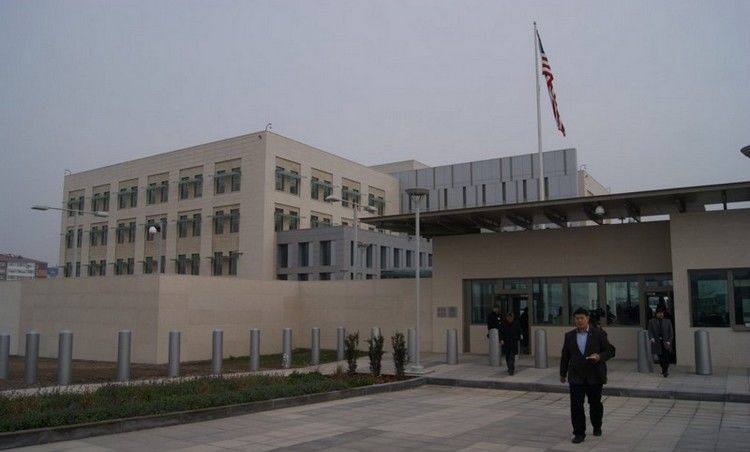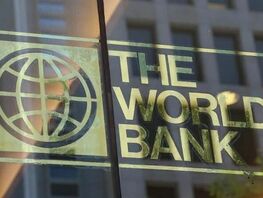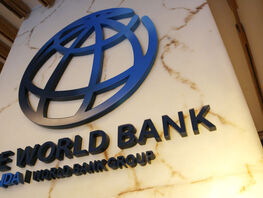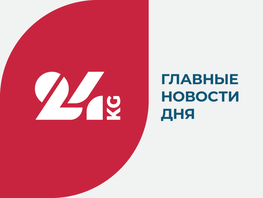
Photo Internet. Building of US Embassy in Bishkek
The attitude of great powers to small states can be understood by those whom these giants send as their representatives. Often, the appointment of ambassadors clearly demonstrates how seriously its partners are treating the republic.
The first US Ambassador to Kyrgyzstan was Edward Hurwitz, who worked from September 1992 till October
1994. Under him, the United States Agency for International Development (USAID) began to work actively in the
Kyrgyz Republic. In May 1993, the sides signed an intergovernmental agreement, which
Kyrgyzstan denounced in August 2016, being offended by awarding a political prisoner Azimzhan Askarov.
At the time of Hurwitz (just the day after the presentation of credentials to Askar Akayev), Kyrgyzstan joined the World Bank Group, after which credit and grant funds began to flow into the republic under the guise of help.
The Soros Foundation started working in Kyrgyzstan also under him — in 1993, although its official registration in the republic took place only two years later. Finally, under Edward Hurwitz, the notorious PESAC program, funded by the same World Bank, was launched in the republic. Its result: Kyrgyzstan has almost completely lost its own industry.
Under Mr. Hurwitz, the Kyrgyz-American Faculty (KAF) of Business, Law and Humanitarian Sciences was established at the Kyrgyz National University.
Eileen Malloy worked in Kyrgyzstan from October 1994 till July 1997. Negotiations on the republic’s joining the World Trade Organization began under her. Ms. Malloy participated in the signing of an agreement on cooperation in the field of the securities market on April 11, 1997. One of its conditions was the creation of a Central Securities Depository in the Kyrgyz Republic, which had been done then.
Anne Marie Sigmund arrived in Kyrgyzstan in late September 1997 and worked until August 2000. Two years after her appointment, she had a new deputy — former Assistant for Special Assignments of US Under-Secretary of State for Political Affairs Sheila Gwaltney.
Under Mrs. Sigmund — in November 1997 — the aforementioned KAF was renamed into the American University in Kyrgyzstan (now AUCA). The National Democratic Institute (NDI) started working in Kyrgyzstan, and the republic was admitted to the WTO.
John O’Keefe presented his credentials to the President Akayev in September 2000. Prior to that, he worked as an Adviser to the US Embassy in Russia. He completed the mission in the Kyrgyz Republic in July 2003.
There were the following events during his mission: deployment of the American Gansi airbase at Manas airport, Aksy events of 2002, creation of the opposition movement «For resignation of Akayev and reform for the people," march of Aksy residents to Bishkek.
Under John O’Keefe, a human rights organization Freedom House began its work in Kyrgyzstan, and the Media Support Center («American printing house») was opened. During the period of Mr. O’Keefe’s activity, the United States had claims to Kyrgyzstan on «respect for human rights» issue.
Stephen Young served as US Ambassador to the Kyrgyz Republic from April 2003 until August 2005. The most important event of 2005 in Kyrgyzstan was, as you know, the first revolution, which resulted in the overthrow of the president Askar Akayev.
It can be recalled that the International Republican Institute (IRI) started operating under Young in Kyrgyzstan, which is funded through USAID, the US Department of State and private foundations. IRI pays special attention to election monitoring.
Marie Yovanovitch replaced Young as an ambassador in Kyrgyzstan in late August 2005 and worked until
August 2008. According to experts, she turned out to be a weak strategist, and the
Kyrgyz-American relations have deteriorated significantly — up to the possible withdrawal of
Kyrgyzstan from under the influence of the
United States.
In 2006, Marie Yovanovitch offered Kyrgyzstan to join the program of the World Bank and the International Monetary Fund — Heavily Indebted Poor Countries (HIPC). Its goal is to help poor countries in paying external debt. This is the only fact in the history of Kyrgyzstan, when some officials, opposition and NGOs joined forces against the idea. According to the unanimous opinion of representatives of all three socio-political «branches," HIPC actually meant external management of Kyrgyzstan by donors.
At the same time, in 2006, two American diplomats were expelled from Kyrgyzstan, as official documents said, «for activities incompatible with the status of a diplomat.»
Resignation of Mrs. Yovanovitch coincided with the so-called arms scandal. According to the official version, on August 5, 2008, during an operative preventive measure by the Ministry of Internal Affairs of Kyrgyzstan «Arsenal," policemen found a mansion rented by US citizens. There were detected 53 small arms: large-caliber machine guns, underbarrel grenade launchers, assault rifles, pistols, sniper rifles, as well as over 15,000 different-caliber ammunition cartridges.
Tatiana Gfoeller-Volkoff headed the US diplomatic mission from October 2008 till March 2011. The second revolution occurred in April 2010 at that time. As a result, President Kurmanbek Bakiyev fled the country.
Under Mrs Gfoeller, in October 2009, another spy scandal related to the US Embassy flared up in Kyrgyzstan and immediately went out. Then, the chekists detained two Kyrgyz citizens — former policemen, who served as security at the Embassy. According to a number of media, searching the house of one of them, the chekists found a fact sheet from the Bishkek office of the CIS Antiterrorist Center (ATC). It contained information about the leaders of extremist groups in Central Asia.
Then the journalists supposed that the Ambassador Gfoeller met, with the assistance of the Prime Minister Daniyar Usenov, with the head of the State National Security Service Murat Sutalinov. They allegedly managed to agree and not to release this story.
After April 7, 2010, the then head of the interim government Roza Otunbayeva complained about Mrs. Gfoeller that she paid little attention to contacts with the opposition, preferring Kurmanbek Bakiyev. Ms Gfoeller was dismissed early. Then the observers believed that Roza Otunbayeva insisted on this.
Under Tatiana Gfoeller, the USAID-funded Development Alternative Incorporated (DAI), a project to assist in strengthening the Parliament, has been launched in Kyrgyzstan (in September 2010). The project acted in the framework of a bilateral agreement between the governments of the United States and the Kyrgyz Republic on cooperation to facilitate assistance dated May 19, 1993.
Pamela Spratlen took up the post of US Ambassador to Kyrgyzstan in April 2011. She left the country
in December 2014.
The main event during her stay in Kyrgyzstan was the withdrawal of the US airbase, renamed under Kurmanbek Bakiyev into Manas Transit Center.
In 2012, the Youth and Patriotic Movement of Kyrgyzstan accused Ms. Spratlen, along with her British counterpart Julia Farnworth, of interfering in the internal affairs of Kyrgyzstan.
Before her departure from Kyrgyzstan, Mrs. Spratlen published an article in which she noted that rapprochement with Russia could have a negative impact on democracy in Kyrgyzstan. The article said: «How can Kyrgyzstan keep its democratic trajectory, striving for this partnership? The decision of President Atambayev to join the Customs Union by early 2015 is an example of this problem.»
The current Ambassador
Sheila Gwaltney took up her duties in September 2015. We will see what she leaves at the end of her mission.
It should be noted that six out of nine US Ambassadors to Kyrgyzstan are women.
In principle, the activity of Ambassadors in the host country is dictated by the interests of the state that sent them. Representatives of the United States, if you analyze their activities and compare with the work of colleagues from the Russian diplomatic mission, are more active. But let each reader compare the work of diplomats and make a conclusion, whose activity in Kyrgyzstan is more effective.













